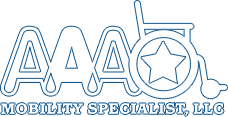Frequently Asked Questions; Vehicle Lifts
Over the past month, I’ve asked customers who came into the store what questions they had, what they wish they knew before they jumped into this process and what information would make moving forward easier. I was surprised when most of them had the same questions, so instead of providing a blog that covers only one topic, we are doing a Q&A blog where I will answer the most common questions.
The most frequent question I was asked was, “why did my medical provider say this was the only equipment I could have?”
Before I answer this question, I want to point out that if you are discussing medical equipment with your medical provider, and they aren’t providing you with the needed information, or they aren’t answering your questions – find a different medical provider. When you start becoming dependent on mobility aids, it is of the upmost importance that you can not only have open and honest conversations with your Doctors, but that they inform you of what’s to come, address any areas of concern and make sure that you are properly educated on all aspects of the process; from the evaluation to the delivery.
When you go in for an evaluation for medical equipment, whether through private insurance, Medicare, or the Veteran’s Administration Hospital – the first thing they are going to look at is your medical history and where your health is declining. If you are in general good health, but struggle with walking for longer periods of times, some simple, like a scooter would probably be prescribed. Versus, if you have rapidly declining health or are an amputee patient, they might prescribe something more custom, with features designed to make life easier for you. The mobility equipment is prescribed based on your current needs, not possible future needs, in order to assist you in living a happy, function and mobile lift. The goal with mobility equipment is not to provide you with more than you need because your prescribing medical professional does not want you to become dependent on your mobility equipment for anything and everything, they want you to be dependent on the equipment only for what you need it for.
Another frequently asked question was, “what happens if I need different equipment down the road?”
One of the nice things about vehicle lifts is that most of them can be used for either a scooter or a power chair with minimal modifications. The only lift that cannot be modified is a Tilt N Tote or a Power Tote, those are strictly for manual wheelchair. If there is a possibility that down the road you will be going to a heavier, multi-function chair, there is a new lift out that has a 450lb lifting capacity that is hitch mounted. Bottom line, there are options and by taking all possibilities into consideration – we can get you set up for the long term with the best lift for you.
The last question I was asked a lot was, “What happens if I get into an accident?”
With the addition to the vehicle it is natural to be concerned about the possibility of an accident. We always recommend calling your insurance company and letting them know that you are having a vehicle lift installed and have it added to your vehicle insurance policy. Typically, there isn’t a dramatic change in your insurance due to the lift. However, if there is an increase more than you are comfortable with you can also add it to your home insurance policy. We recommend sticking with vehicle insurance, but there have been home policies that have also covered the replacement. Just like a typical accident, without a lift, the insurance company will cover the replacement or repair to your equipment.
If you have any questions or would like to further discuss any of the above questions, please reach out! My goal is help you regain your independence through mobility.




 Powerhouse Group
Powerhouse Group